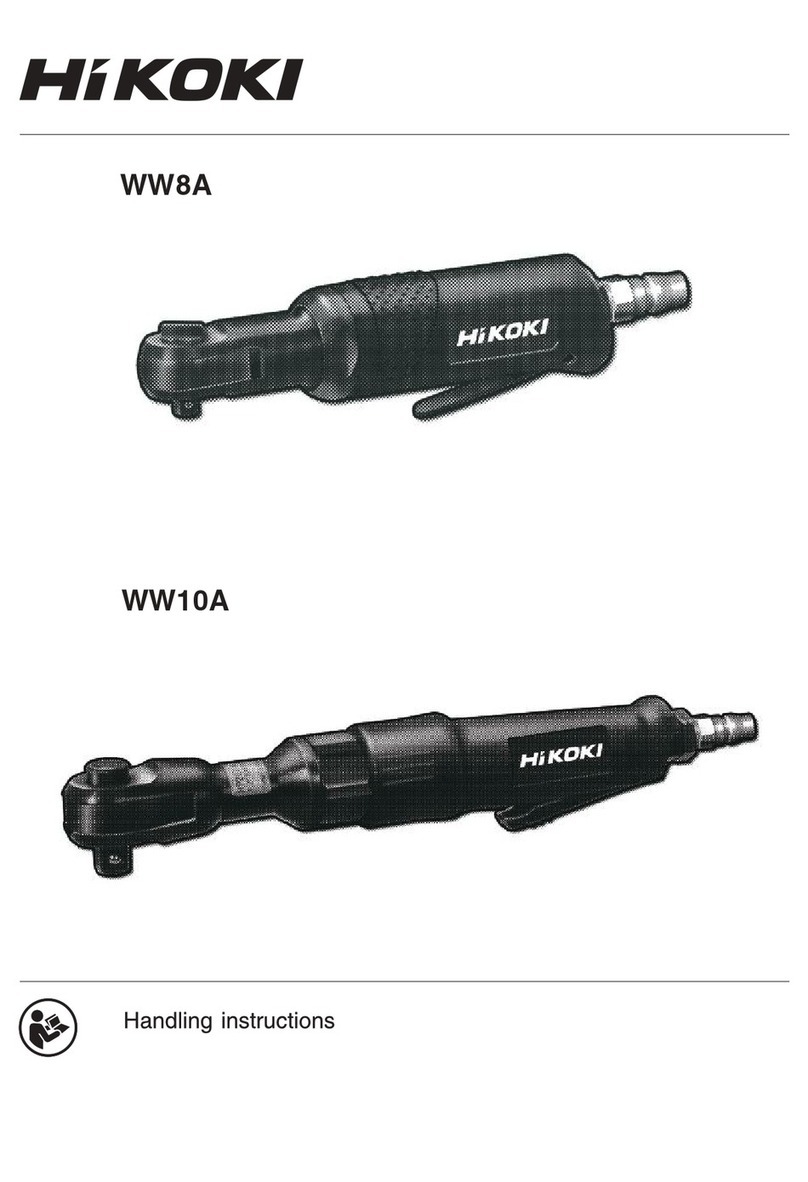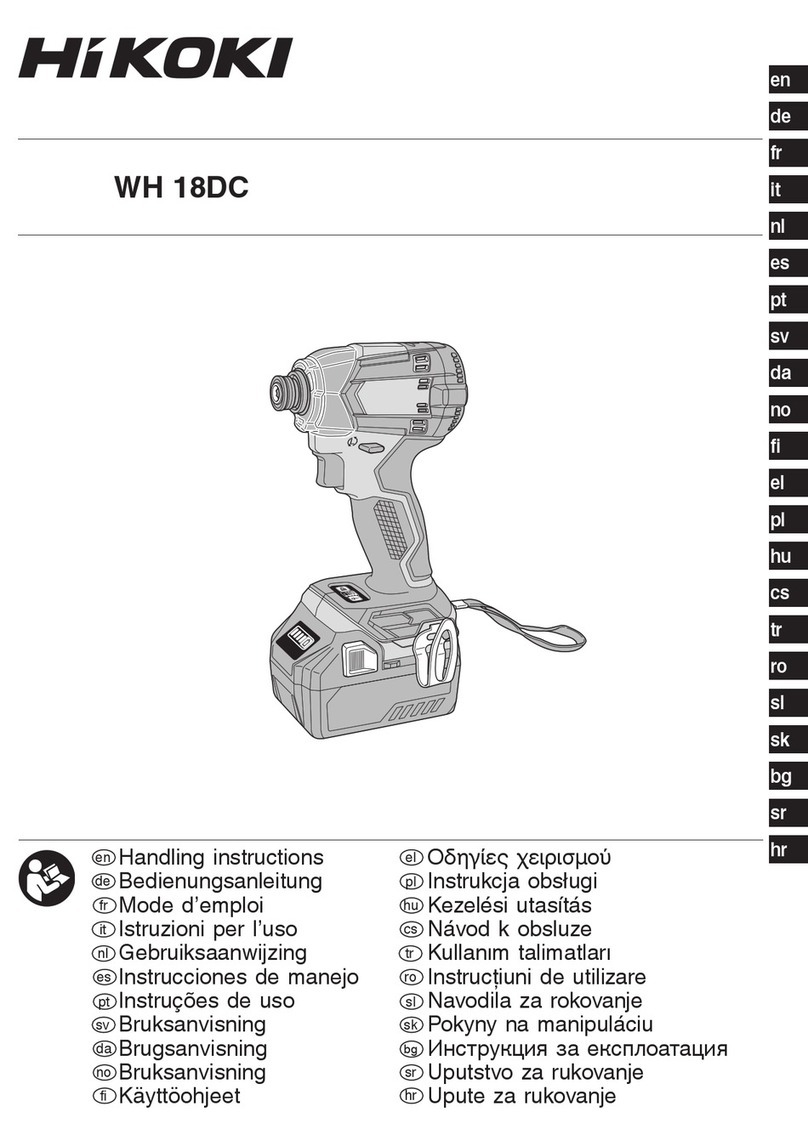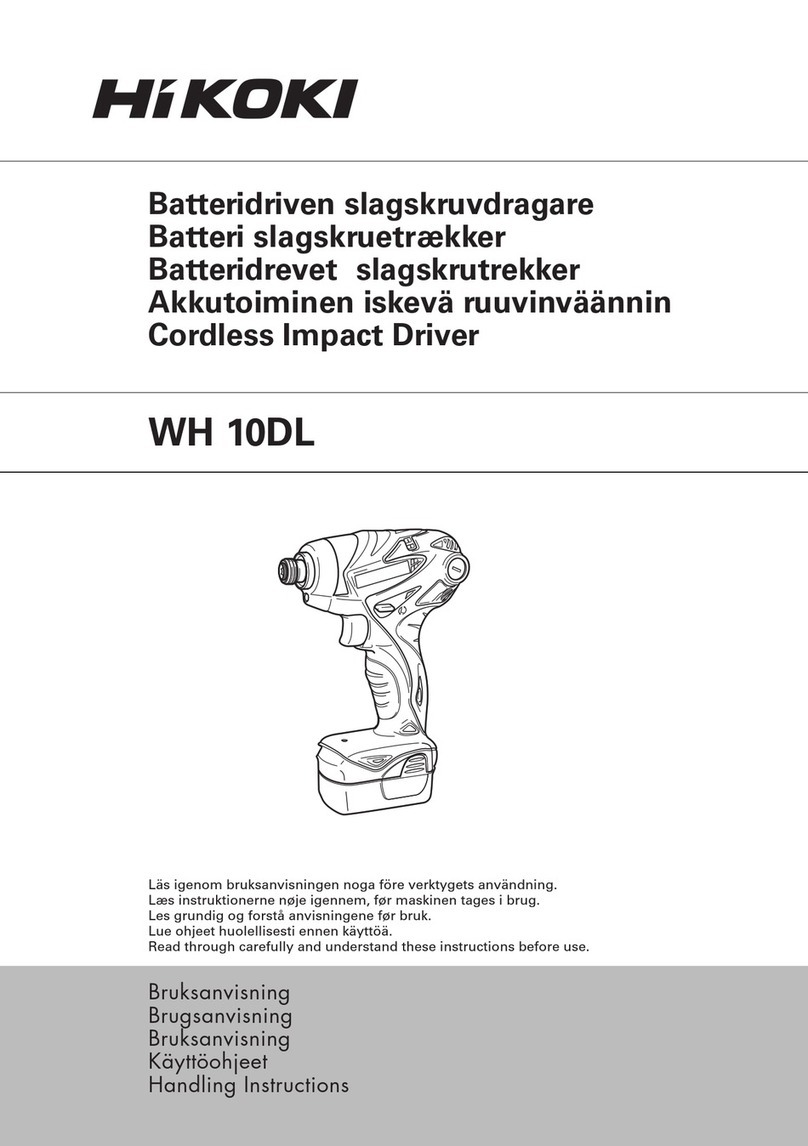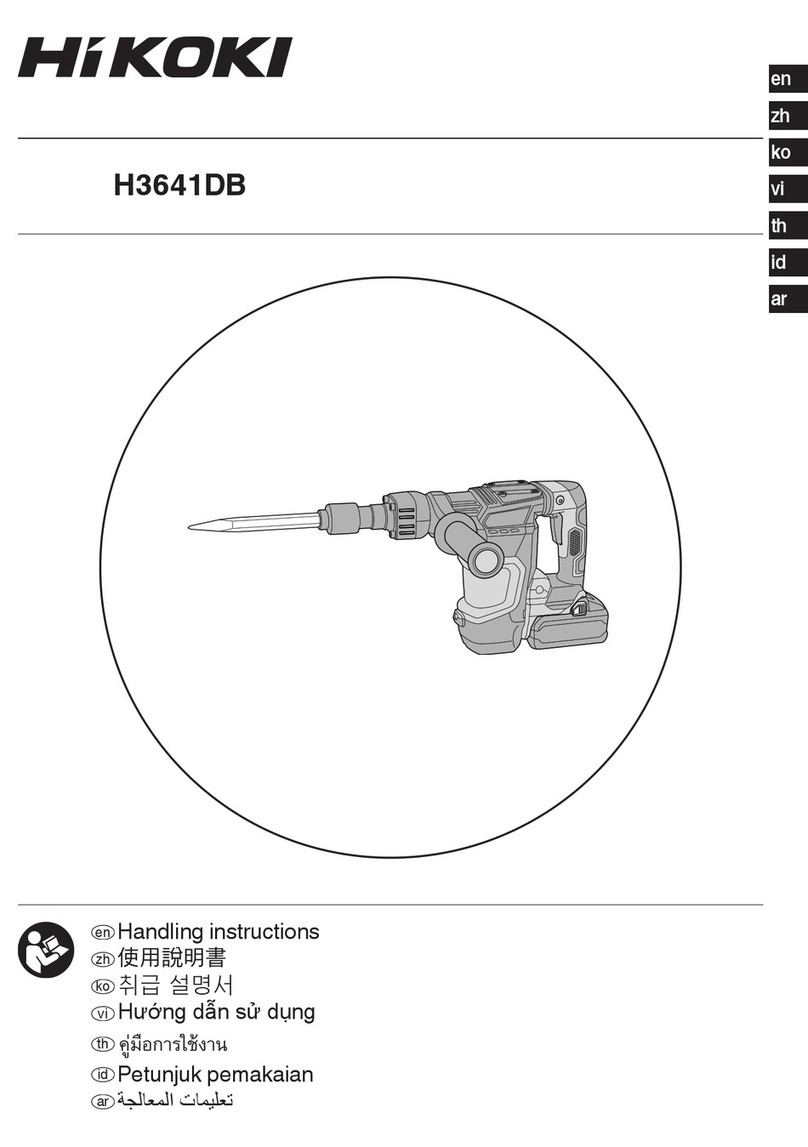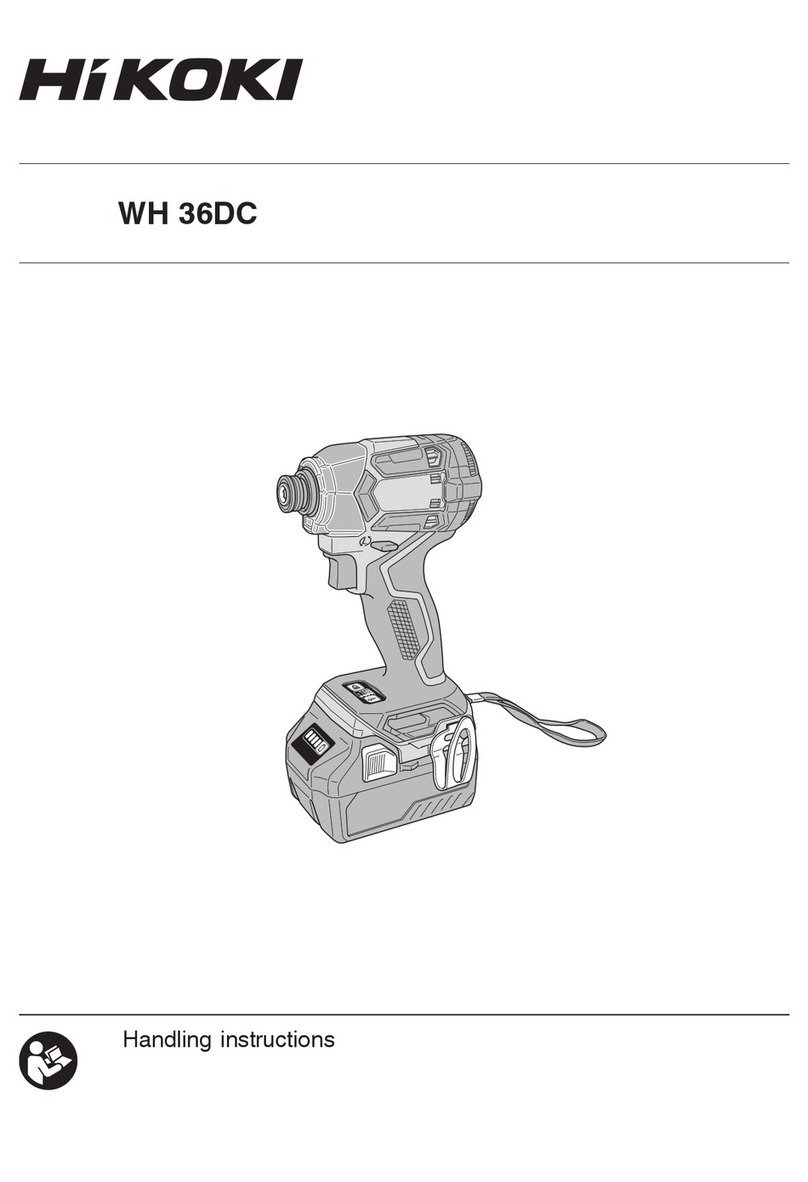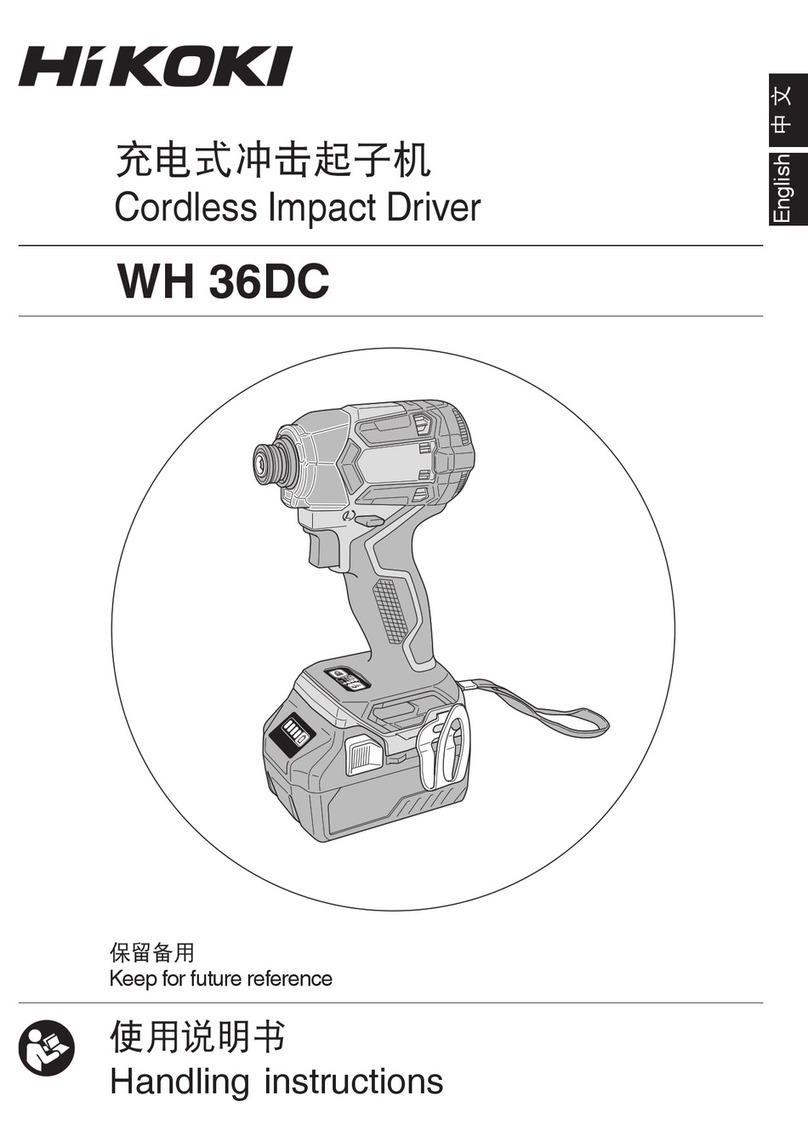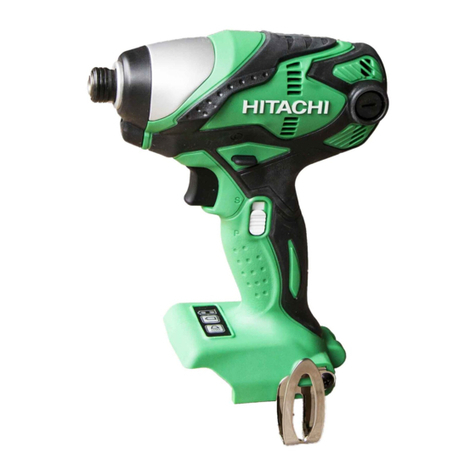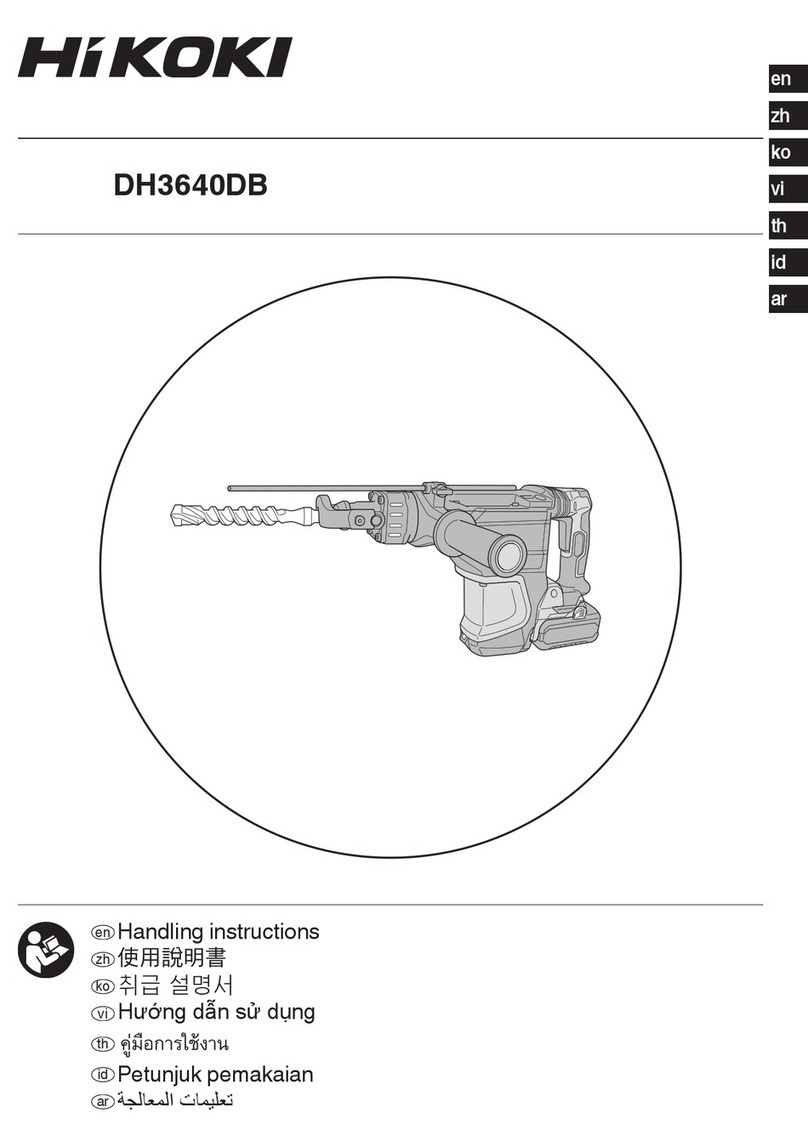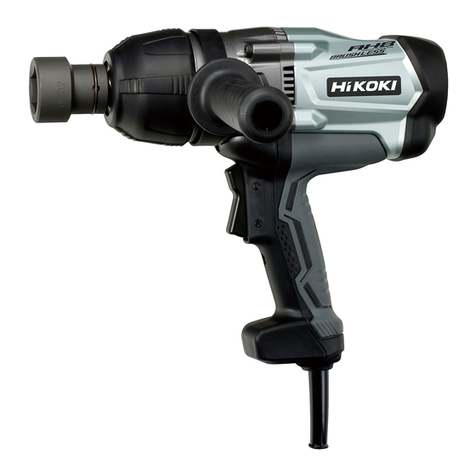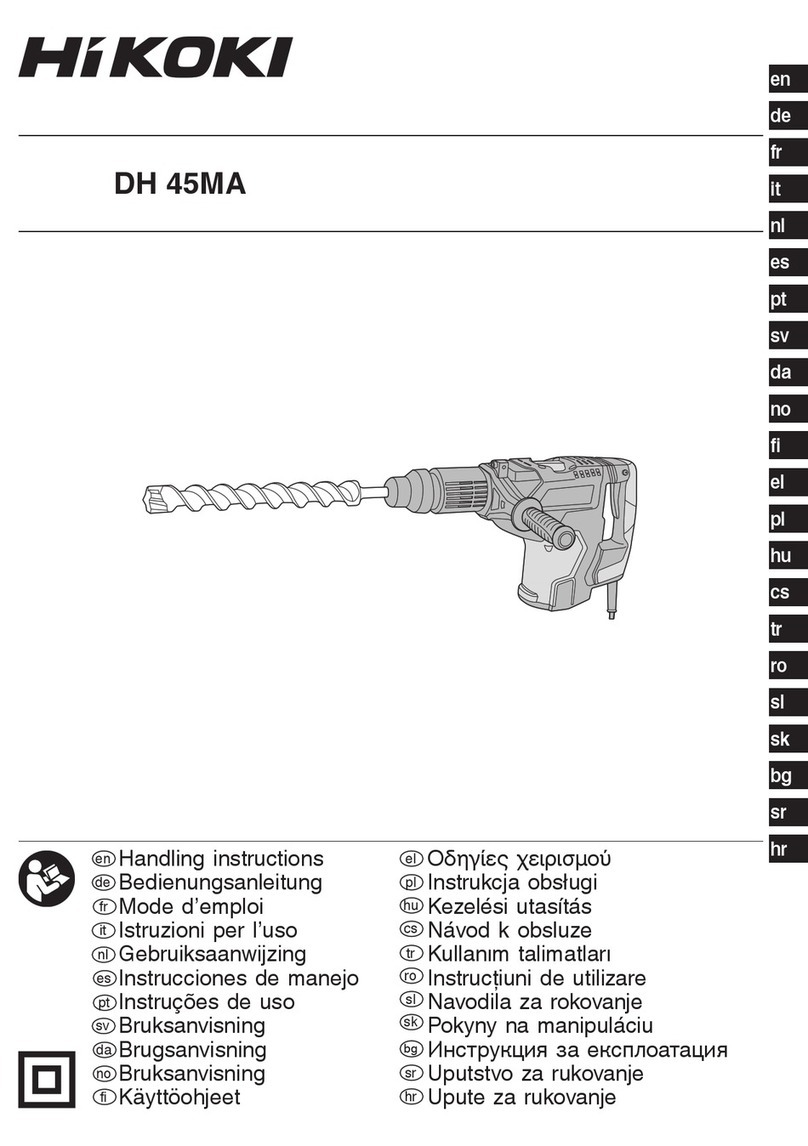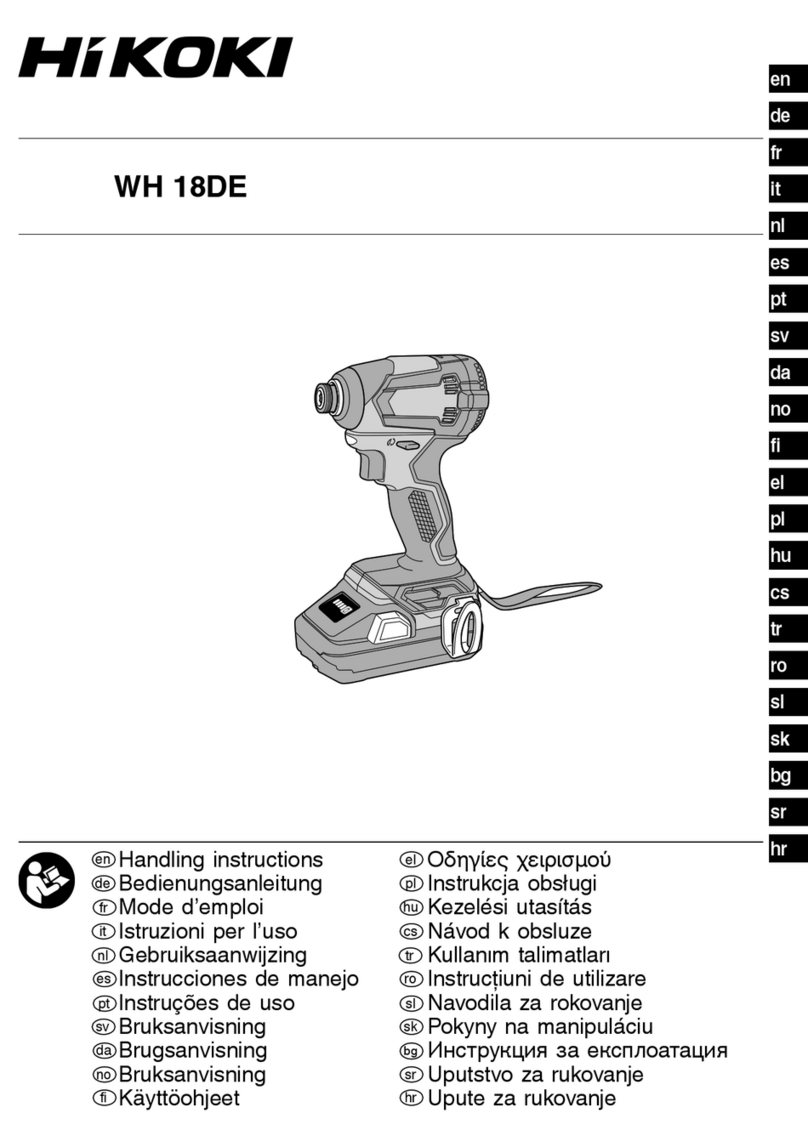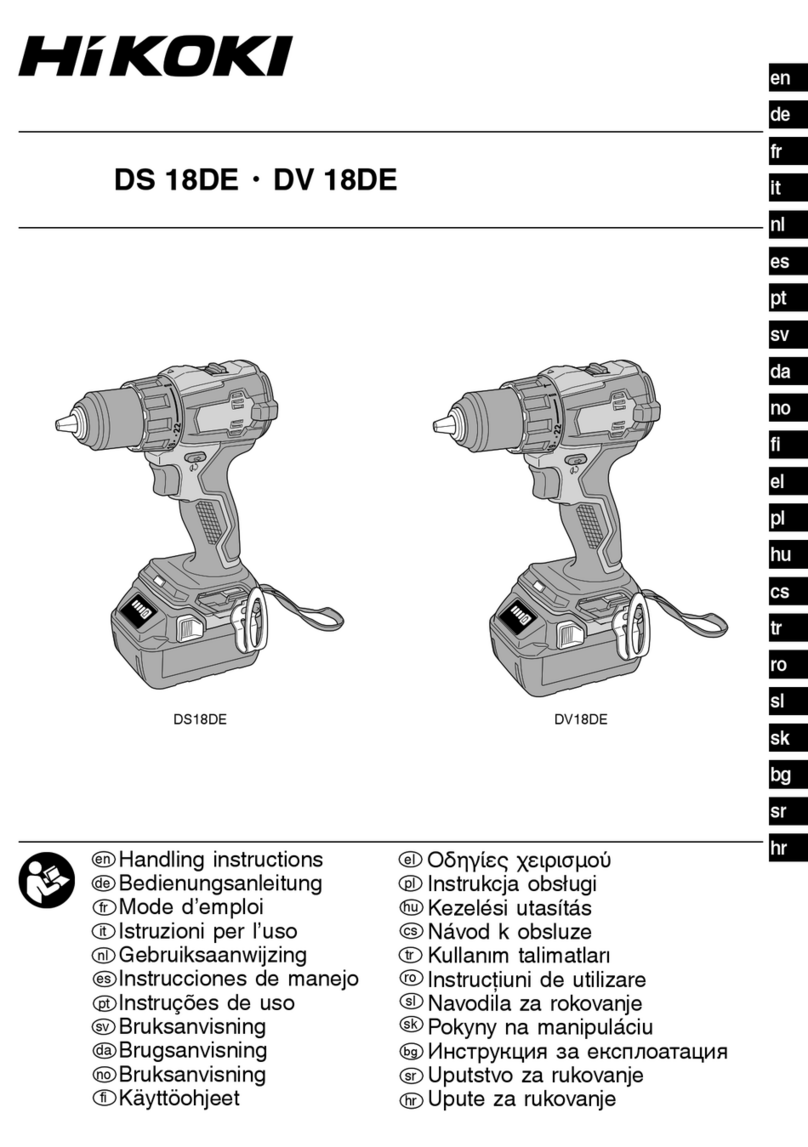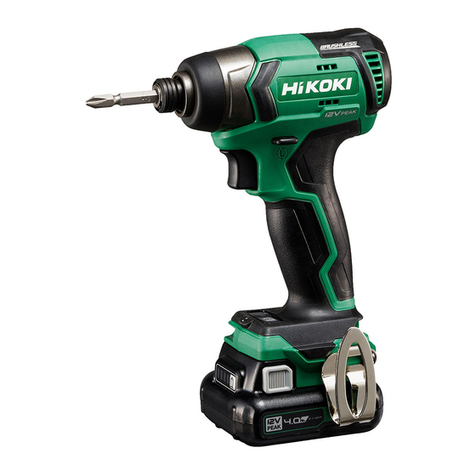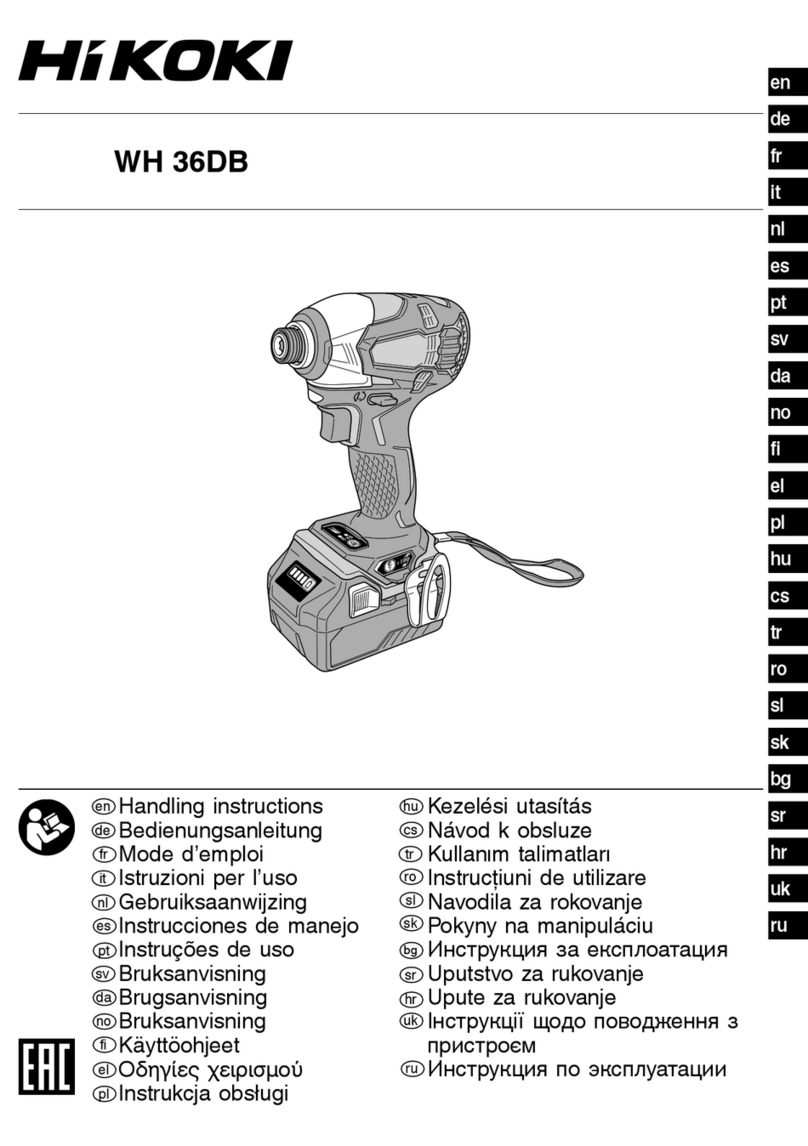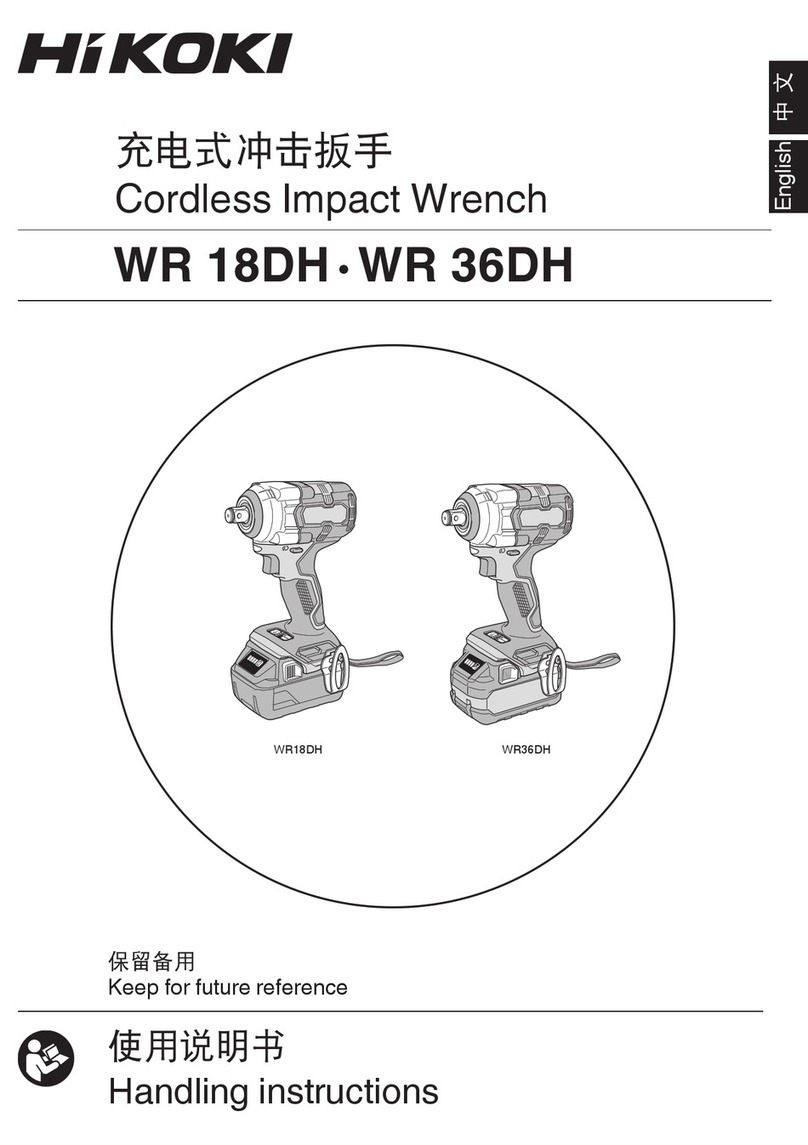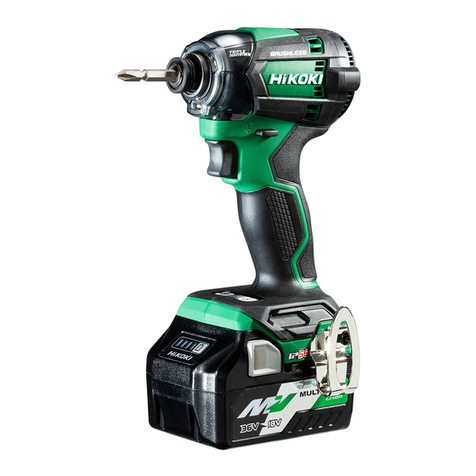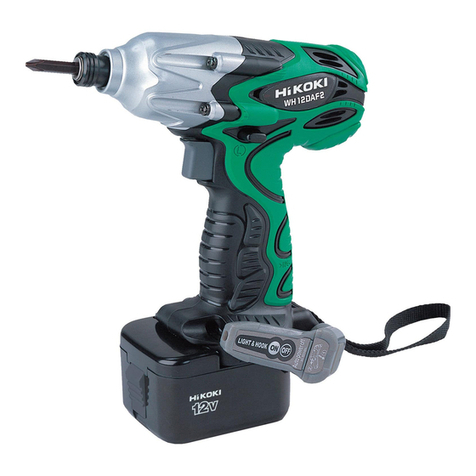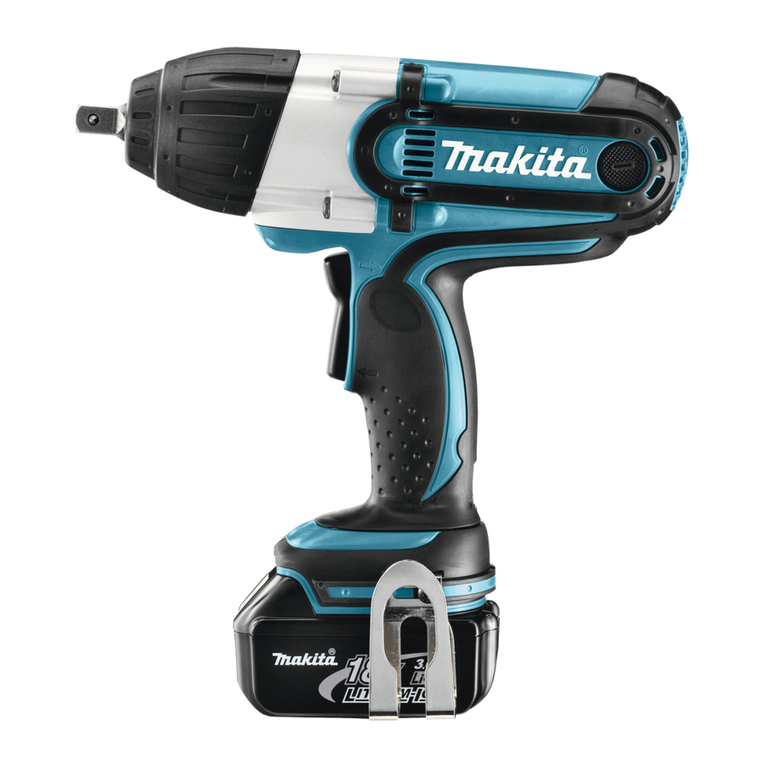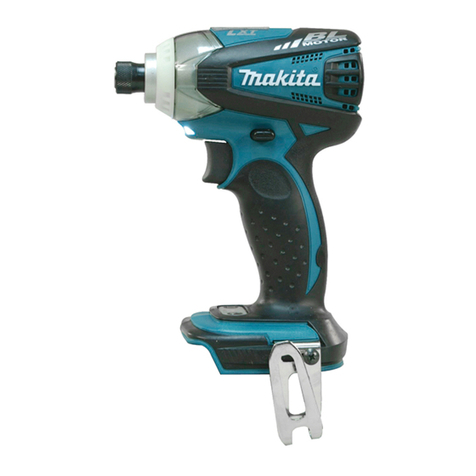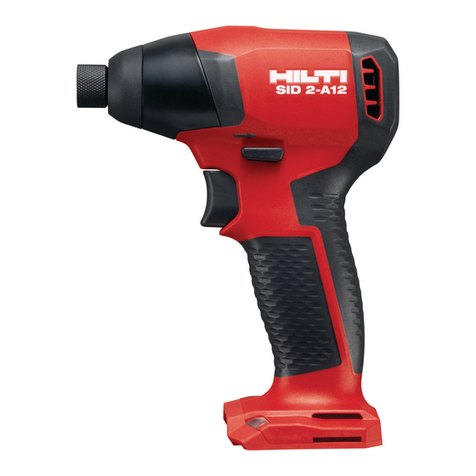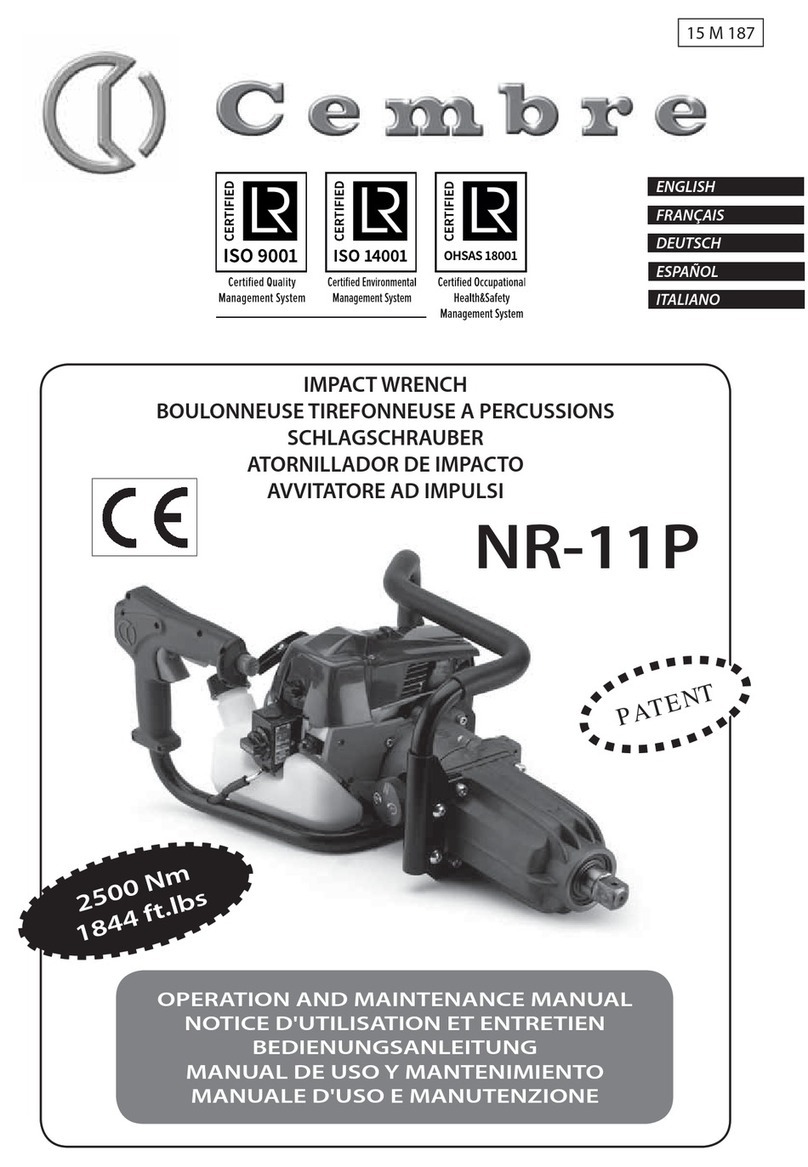
3
b) Use power tools only with specifically
designated battery packs.
Use of any other battery packs may create a risk of
injury and fire.
c) When battery pack is not in use, keep it away
from other metal objects, like paper clips, coins,
keys, nails, screws or other small metal objects,
that can make a connection from one terminal to
another.
Shorting the battery terminals together may cause
burns or a fire.
d) Under abusive conditions, liquid may be ejected
from the battery; avoid contact. If contact
accidentally occurs, flush with water. If liquid
contacts eyes, additionally seek medical help.
Liquid ejected from the battery may cause irritation or
burns.
6) Service
a) Have your power tool serviced by a qualified
repair person using only identical replacement
parts.
This will ensure that the safety of the power tool is
maintained.
PRECAUTION
Keep children and infirm persons away.
When not in use, tools should be stored out of reach of
children and infirm persons.
CORDLESS IMPACT DRIVER / IMPACT
WRENCH SAFETY WARNINGS
Hold power tool by insulated gripping surfaces, when
performing an operation where the fastener may
contact hidden wiring. Fasteners contacting a “live” wire
may make exposed metal parts of the power tool “live” and
could give the operator an electric shock.
ADDITIONAL SAFETY WARNINGS
1. This is a portable tool for tightening and loosening
screws, bolts and nuts. Use it only for these operation.
2. Make sure to securely hold the tool during operation.
Failure to do so can result in accidents or injuries.
3. Make sure that the battery is installed firmly. If it is at all
loose it could come offand cause an accident.
4. Preparing and checking the work environment. Make
sure that the work site meets all the conditions laid forth
in the precautions.
5. Do not allow foreign matter to enter the hole for
connecting the rechargeable battery.
6. Never disassemble the rechargeable battery and
charger.
7. Never short-circuit the rechargeable battery.
Shortcircuiting the battery will cause a great electric
current and overheat. It results in burn or damage to the
battery.
8. Do not dispose of the battery in fire. If the battery is burnt,
it may explode.
9. Bring the battery to the shop from which it was purchased
as soon as the post-charging battery life becomes too
short for practical use. Do not dispose of the exhausted
battery.
10. Do not insert object into the air ventilation slots of the
charger. Inserting metal objects or inflammables into the
charger air ventilation slots will result in electrical shock
hazard or damaged charger.
11. Check the actual tightening torque with a toruqe wrench.
12. Stop the tool before switching the direction of rotation.
Always release the switch and wait for tool to stop before
switching the direction of rotation.
13. Never touch the turning part. Do not allow the turning
part section to get near your hands or any other part of
your body. You could be cut or caught in the turning part.
Also, be careful not to touch the turning part after using
continuously it for a long time. It gets quite hot and could
burn you.
14. Please use the designated attachments which are
listed in the operations manual and HiKOKI’s catalog.
Accidents or injuries could result from not doing so.
15. Make sure to firmly install the attachments in the anvil. If
the attachments is not firmly installed it might come out
and cause injuries.
<WH14DSDL / WH18DSDL>
After installing the driver bit, pull lightly out the bit to
make sure that it does not come loose during use. If the
guide sleeve does not return to its original position, then
the bit is not installed properly.
<WR14DSDL / WR18DSDL>
Align the plunger located in the square part of the anvil
with the hole in the hex. socket. Then push the plunger,
and mount the hex. socket on the anvil. Check that the
plunger is fully engaged in the holes. When removing the
socket, reverse the sequence.
16. The push button cannot be switched while the tool is
turning. To switch the push button, stop the tool, then set
the push button.
17. In the work of the save mode(S), avoid the continuous
tightening as temperature of electronic components of
the converter switch increase.
18. Install securely the hook. Unless the hook is securely
installed, it may cause an injury while using.
19. To prevent the battery power consumption caused
by forgetting to turn offthe LED light, the light goes off
automatically in about 15 minutes.
20. Resting the unit after continuous work.
21. Do not touch the metal parts, as it gets very hot during
continuous work.
22. Do not look directly into the light. Such actions could
result in eye injury.
CAUTION ON LITHIUM-ION BATTERY
To extend the lifetime, the lithium-ion battery equips with the
protection function to stop the output.
In the cases of 1 to 3 described below, when using this
product, even if you are pulling the switch, the motor may
stop. This is not the trouble but the result of protection
function.
1. When the battery power remaining runs out, the motor
stops.
In such a case, charge it up immediately.
2. If the tool is overloaded, the motor may stop. In this
case, release the switch of tool and eliminate causes of
overloading. After that, you can use it again.
3. If the battery is overheated under overload work, the
battery power may stop.
In this case, stop using the battery and let the battery
cool. After that, you can use it again.
Furthermore, please heed the following warning and caution.
WARNING
In order to prevent any battery leakage, heat generation,
smoke emission, explosion and ignition beforehand, please
be sure to heed the following precautions.
1. Make sure that swarf and dust do not collect on the
battery.
○During work make sure that swarf and dust do not fall on
the battery.
○Make sure that any swarf and dust falling on the power
tool during work do not collect on the battery.
○Do not store an unused battery in a location exposed to
swarf and dust.
0000BookWH14DSDL.indb30000BookWH14DSDL.indb3 2017/12/0518:47:122017/12/0518:47:12

